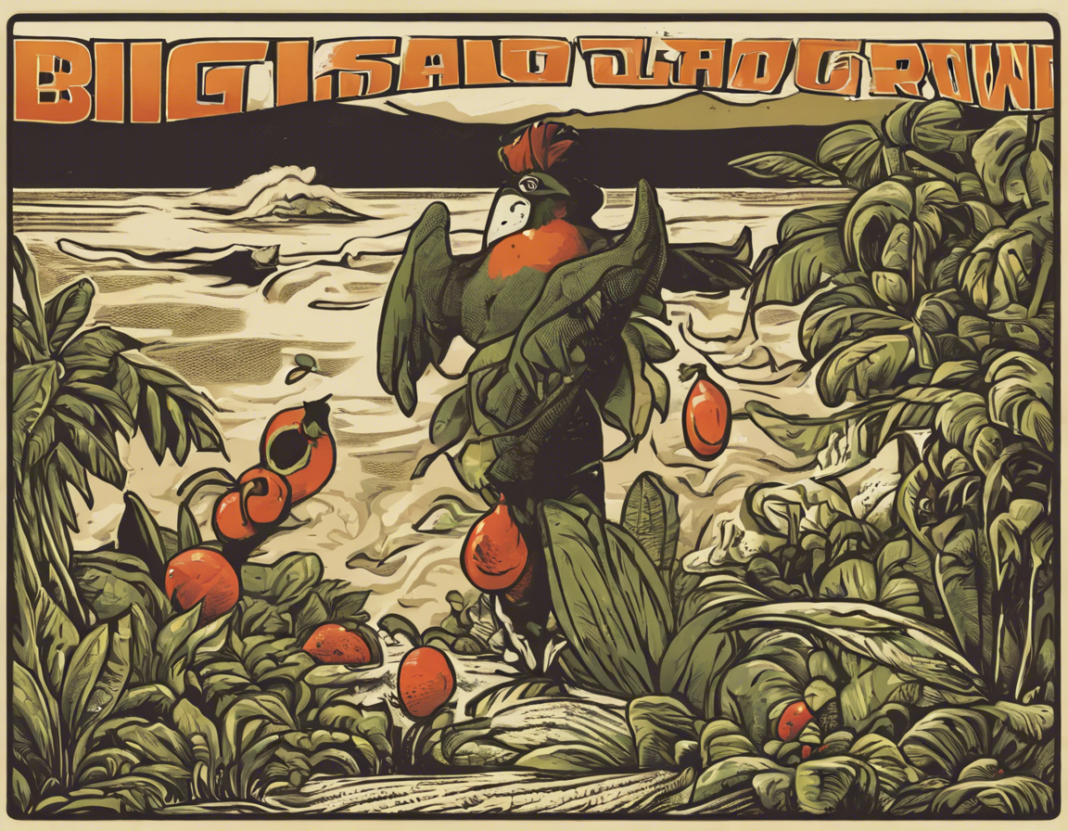Are you looking to dive into the vibrant world of locally grown produce on the Big Island of Hawaii? The rich volcanic soil and diverse microclimates of the island make it a haven for cultivating a wide array of fresh fruits and vegetables. From tropical fruits like pineapple and papaya to exotic varieties like lychee and dragon fruit, the Big Island offers a cornucopia of flavors waiting to be discovered.
The Unique Growing Conditions of the Big Island
The Big Island, also known as Hawaii Island, is the largest of the Hawaiian islands and boasts a unique set of growing conditions that make it ideal for agriculture. With 8 of the world’s 13 climate zones, the island offers a wide range of environments for cultivating different types of crops. The fertile volcanic soil is rich in nutrients, providing an excellent foundation for plant growth. The island’s abundant rainfall and year-round sunshine further contribute to its agricultural prosperity.
Popular Big Island Grown Produce
-
Kona Coffee: Known for its smooth flavor and rich aroma, Kona coffee is a sought-after product grown on the slopes of the Hualalai and Mauna Loa volcanoes.
-
Macadamia Nuts: These buttery, crunchy nuts are a staple of Hawaiian cuisine and are grown on orchards throughout the Big Island.
-
Avocado: Creamy and delicious, Big Island avocados thrive in the island’s diverse climate zones.
-
Bananas: With different varieties like apple bananas and ice cream bananas, the Big Island is a banana lover’s paradise.
-
Vanilla: The Big Island is one of the few places in the United States where vanilla is grown commercially, with vanilla orchids producing fragrant beans.
Sustainable Farming Practices
Many farmers on the Big Island embrace sustainable farming practices to preserve the island’s ecosystem and support the local community. Organic farming, permaculture, and agroforestry are just a few examples of the environmentally friendly methods employed by growers. By prioritizing soil health, conserving water, and minimizing the use of pesticides, these farmers ensure the long-term viability of their operations while producing high-quality, nutritious produce.
Farm-to-Table Movement
The farm-to-table movement has gained momentum on the Big Island, with many restaurants sourcing their ingredients directly from local farms. By forging partnerships with farmers, chefs are able to create culinary masterpieces using the freshest, most flavorful produce available. This not only supports the local economy but also provides diners with a truly authentic taste of Hawaii.
Exploring Farmers’ Markets
Visiting farmers’ markets is a wonderful way to experience the diversity of Big Island grown produce firsthand. From the bustling Hilo Farmers Market to the laid-back South Kona Green Market, there are numerous opportunities to sample fresh fruits, vegetables, flowers, and other locally made products. Engaging with farmers and artisans at these markets offers a deeper connection to the land and culture of the Big Island.
Health Benefits of Locally Grown Produce
Consuming locally grown produce offers a plethora of health benefits. Freshness is a key advantage, as fruits and vegetables that have been recently harvested retain more nutrients compared to those that have traveled long distances. Seasonal eating is also encouraged, allowing you to align your diet with the natural rhythms of the environment. By supporting local farmers, you contribute to the sustainability of the community while nourishing your body with wholesome, flavorful ingredients.
Frequently Asked Questions (FAQs)
1. What are some of the best ways to enjoy Big Island grown produce?
– Big Island produce can be enjoyed in numerous ways, such as in smoothies, salads, stir-fries, and desserts. Experiment with different recipes to highlight the flavors of these fresh ingredients.
2. How can I find out where to purchase Big Island grown produce?
– Farmers’ markets, roadside stands, and local grocery stores are great places to start. You can also visit farm websites or social media pages to learn more about their products and purchasing options.
3. Is all Big Island produce organic?
– While not all Big Island produce is certified organic, many farmers follow organic practices. It’s recommended to inquire directly with the farmers about their growing methods.
4. What are some lesser-known fruits or vegetables grown on the Big Island?
– Unique offerings like lilikoi (passion fruit), rambutan, breadfruit, and taro can be found on the Big Island. Don’t hesitate to try something new and expand your palate.
5. Are there any guided tours or farm experiences available for exploring Big Island agriculture?
– Yes, several farms offer guided tours where you can learn about the cultivation process, interact with the plants, and even participate in farm activities. Check with local tour operators or directly with the farms for more information.
In conclusion, delving into the abundance of Big Island grown produce is not only a culinary adventure but also a journey of discovery and appreciation for the land and its people. By savoring the flavors of locally sourced fruits and vegetables, you support sustainable agriculture practices and contribute to the vibrant tapestry of Hawaiian agriculture. Embrace the freshness, diversity, and health benefits of Big Island produce, and let your taste buds revel in the bountiful offerings of this tropical paradise.
